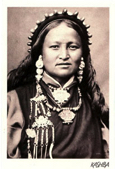Home
KASHBA Asiatica
Ais Loupatty & Ton Lankreijer
Staalstraat 6
1011 JL Amsterdam
Open 12:00 – 17:00
Zondag / Sunday 14:00 - 17:00
Contact:
31-20- 6 23 55 64

‘The Marco Polo of the Lowlands’ the Brit George Bogle named him in his travelogue of Tibet in 1774.

A few other old travel books mentioned him, with similar wonder, in a footnote with similar wonder as ‘the Mandarin from Middleburgh’.
Of course, many Europeans of his time travelled the world – jesuits, capuchins, merchants – but hardly anyone ever did so overland. Let alone continuously for thirty years by himself.
Except for some personally drawn maps and signed agreements, almost nothing is known about the man. Not surprisingly. After three decades of wandering the world, Samuel had ordered from his deathbed in Batavia to burn all his papers.

Incomprehensible. Did he turn into a foolish eccentric after having travelled alone for so long or had he – perhaps due to his three-year stay amongst the lamas of Lhasa – rather become the opposite? It kept
Until 1987, when ‘Een Mandarijn uit Vlissingen’ was published. In their unintended publication of some remaining fragments Frank Lequin and Albert Meijer gathered from libraries and archives all known writings and documents concerning Samuel van de Putte.
‘The rest of his life can only be imagined in a historical novel,’ Frank Lequin stated during the radio interview I had with the two compilers at the time.
I did not quite agree. It could be interesting, for example, to follow Samuel's footsteps - even if not actually.
In 2003 'Tibetaanse Perziken’ by Carolijn Visser was published. In the book she travels the map of Tibet that Samuel outlined for himself. The book, however, mainly relates her own, present day travel experiences.
Yet, it seems possible to me to draw – without romanticizing – a picture of Samuel by describing where, when and with whom he must have interacted during his travels.
Let me give it a try.
In order not to start every second sentence with ‘maybe' or ‘it could be that’, I at times go for the obvious choice. When Samuel starts the voyage together with Egmond and other friends, for example, I assume that they embark – like more wealthy young lads at the time – in his homewtown harbour Vlissingen (Flushing) for Calais in France.
By following his footsteps I hope to find some answer – a indication is fine with me as well – as to why Samuel, just before his death, preferred to erase the trail of his never-ending travel.
intriguing me intriguing from the seventies onwards.
The old travel books, however, that were to be found at the time in bizarre libraries like the Kaiser Library in Kathmandu or that were tucked away on upper shelves in antiquated Darjeeling bookstores, however, never yielded any result.

All photographs and texts ©Kashba Ais Loupatty & Ton Lankreijer.Webdesign:William Loupatty

